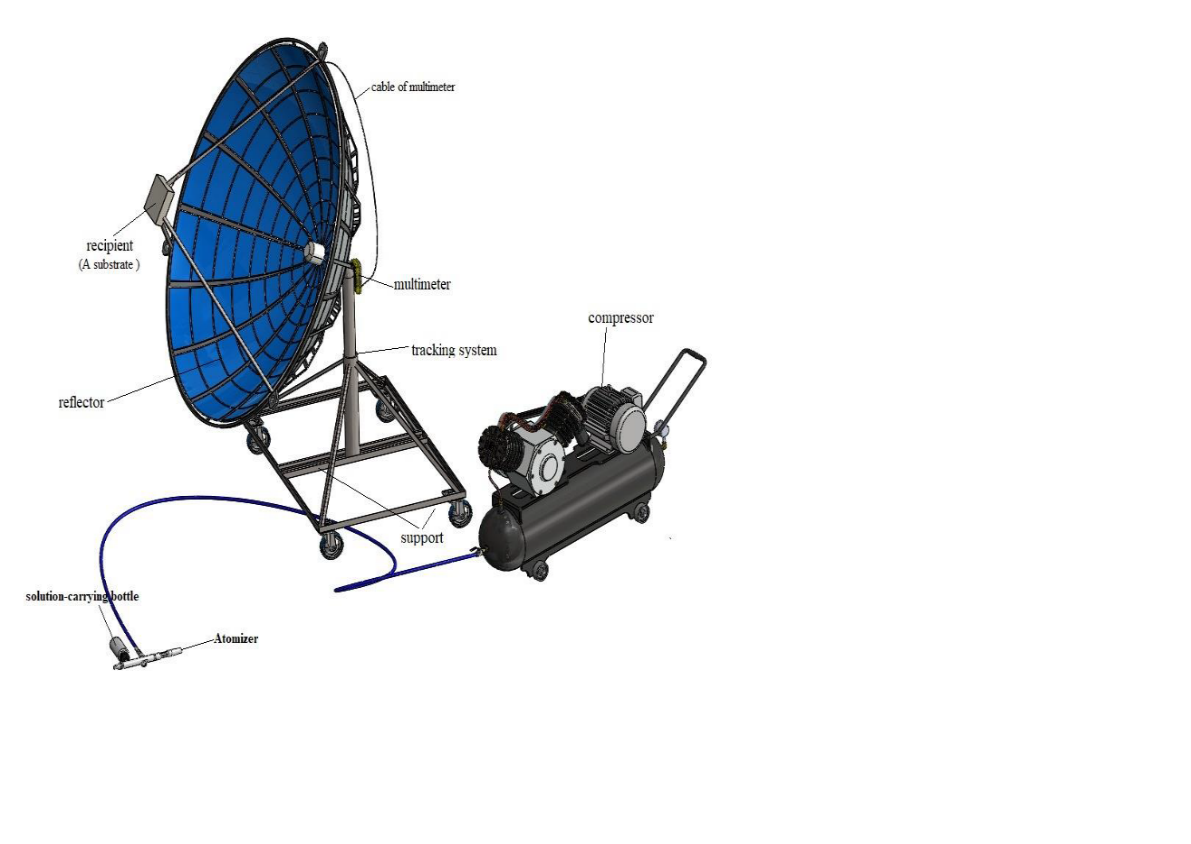In this experimental work, pure nickel oxide and Al-doped NiO thin films have successfully been elaborated onto glass substrates by solar spray pyrolysis technique. The substrates were heated at around 450°C using a solar heater (furnace). The structural, optical and electrical properties of the elaborated Al-doped films have been studied at different atomic percentage ratios (0, 0.5, 1, 1.5 and 2 at. %). The results of Al-doped NiO films XRD patterns were, the formation of (NiO) phase under a cubic crystalline structure (polycrystalline) with a strong favored orientation along (111) plane were noticed at all sprayed films. When Al doping ratio reaches 1 at.%, an growth in crystallite size over 31.9 nm was obtained denoting the nano-structure of the product, which confirmed by SEM images. In addition, aluminum oxide Al2O3 was clearly observed at 1.5 at.% Al ratio. Otherwise, all thin films have a good optical transmission in the visible region of about 65%, the optical band gap energy decreased from 3.69 to 3.64 eV with increasing Al doping ratio. It is shown that the layer deposited with 0.5 at.% has less disorder with few defects. The investigation on electrical properties of elaborated thin films confirmed that the conductivity of NiO films was improved, after doping them with Al which affirms their p-type character of semiconductor. However, an addition of an excessive quantity of Al content causes the formation of Al2O3 which leads to a decrease in the conductivity. It is worth mentioning that the Al content of 0.5 at.% is the optimum ratio in terms of electrical conductivity and formation defect. Al-doped NiO can be used in various optoelectronic devices due to its good transparency and high electrical conductivity.

